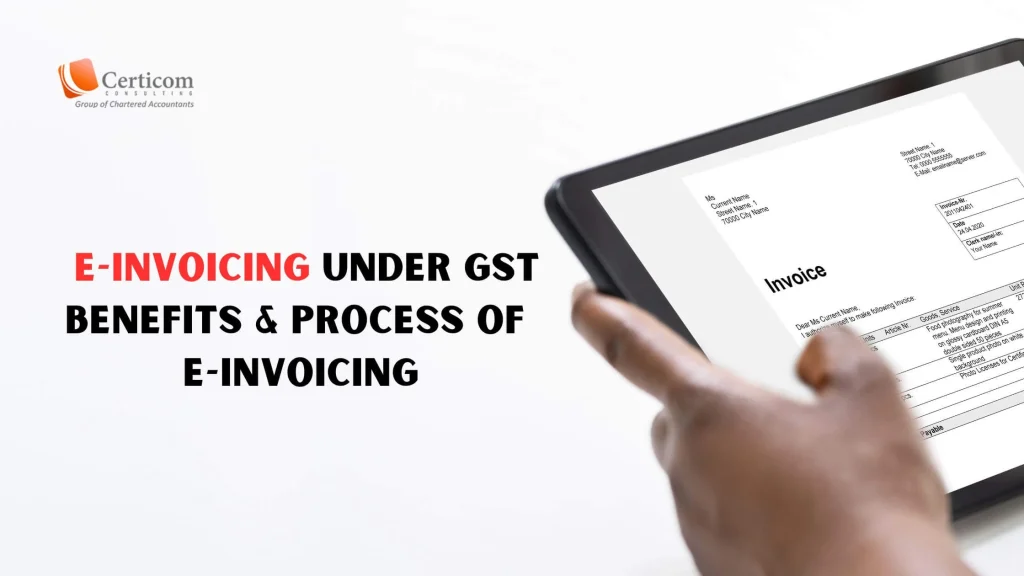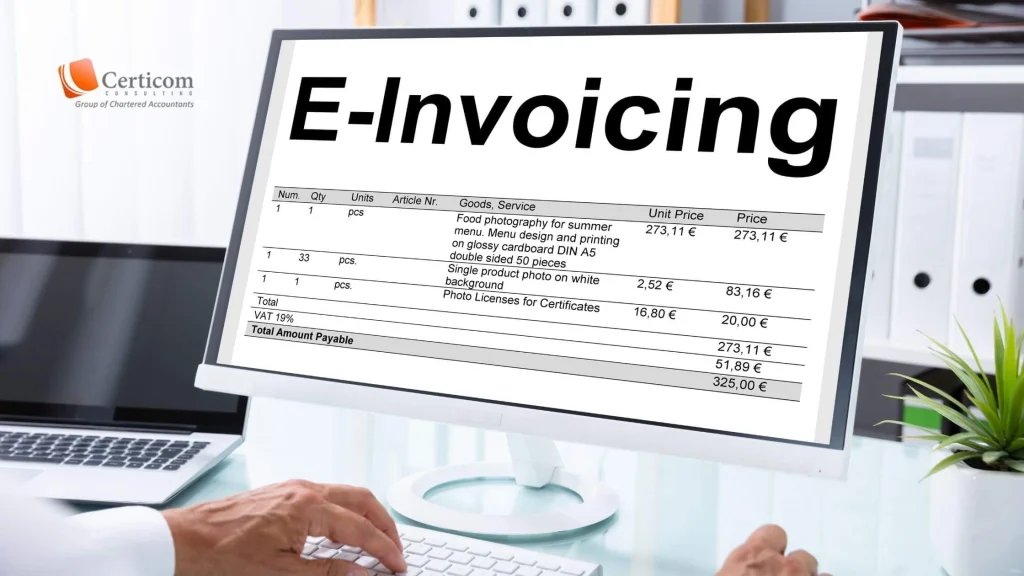ELECTRONIC INVOICE UNDER GST – BENEFITS & PROCESS OF E-INVOICING

E-invoicing is a process of electronically generating invoices and reporting them to the government’s GST portal for record-keeping and compliance purposes. Threshold limit for the applicability of E-invoice reduced from INR 10 Crores to INR 5 Crores. When aggregate turnover exceeds 5 crore in any of the previous 5 years, for the purpose of the aggregate turnover limit, even the exempted turnover would be considered.
This is applicable from 1st August 2023 as per Notification No. 10/2023 – Dated 10th May 2023
Benefits of E-Invoicing under GST
Reduced Errors and Fraud:
E-invoicing reduces the possibility of errors, omissions, and fraud by automating the invoice generation process and ensuring that invoices are accurate and complete.
Faster Processing:
E-invoicing significantly reduces the time it takes to process invoices by eliminating the need for manual data entry and reducing the chances of errors and disputes.
Improved Compliance:
E-invoicing ensures compliance with GST regulations by automatically validating invoices and ensuring they comply with GST rules.
Better Cash Flow Management:
E-invoicing provides real-time access to invoice data, allowing businesses to manage their cash flow more effectively.

Process of E-Invoicing under GST
Invoice Generation:
The seller generates the invoice using his/her ERP or accounting software, which is integrated with the e-invoice system.
Invoice Registration:
The invoice details are uploaded to the Invoice Registration Portal (IRP) in JSON format, which is an e-invoice standard format.
Invoice Validation:
The invoice is validated by the IRP, which checks the details against the GST rules and generates an Invoice Reference Number (IRN).
QR Code Generation:
The IRN is embedded in a QR code along with other invoice details, which is printed on the invoice.
Invoice Sharing:
The e-invoice is shared with the buyer via email or any other digital medium.
Invoice Reporting:
The invoice details are automatically reported to the GST portal, eliminating the need for manual filing of returns.
Read More: 7 MISTAKES TO AVOID WHILE FILING GST RETURNS
Environment-Friendly:
E-invoicing eliminates the need for paper-based invoices, reducing the environmental impact of invoicing and contributing to sustainable development.
Conclusion:
E-invoicing is a significant step towards improving tax compliance and simplifying the invoicing process under GST. It not only reduces the chances of errors and fraud but also improves the efficiency of invoicing and enhances cash flow management. Businesses should embrace e-invoicing as it offers several benefits and makes compliance with GST regulations more accessible
Related Post
A Beginner’s Guide to E-Filing Income Tax Return for FY 2024-25
Faking Tax Deductions? You Could Be Penalised Up To 200% Under Income Tax Rules
Book A One To One Consultation Now For FREE
How can we help? *




